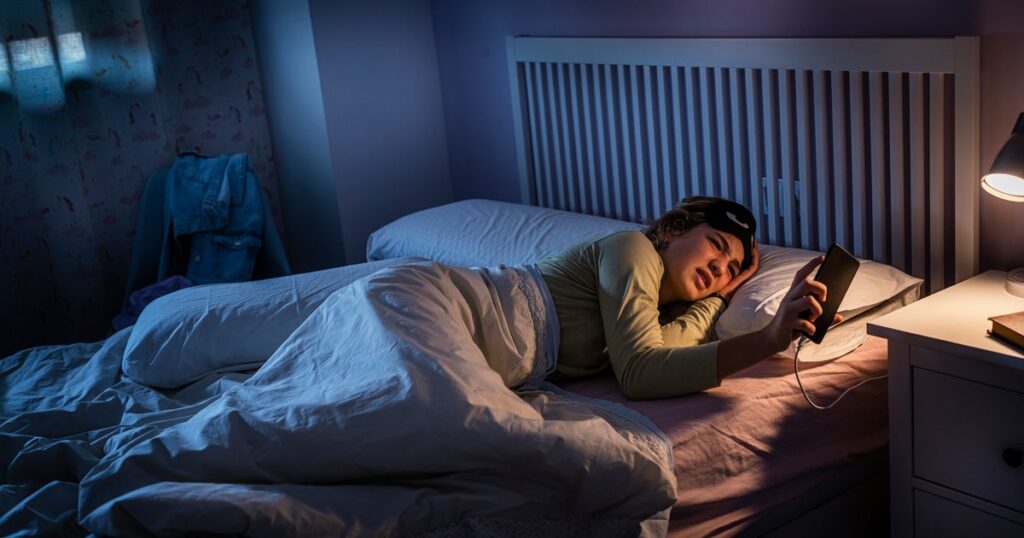If you’re seeking a good night’s sleep, there is, arguably, nothing worse than waking up in the middle of the night only to toss and turn for hours. Despite being a common experience, many people find it terribly difficult to doze off again, especially if their mind starts running wild.
There are tons of techniques out there — from practicing deep breathing exercises to reading calming stories — but what works for one person can differ from what does the trick for another. That’s why it’s crucial to experiment to find a solution that helps you relax and drift back off.
To give you a head start, we asked five people to share their very best tips for falling back asleep — and tapped a sleep psychologist to break down why these tricks work so well. Here’s what they said:
1. Practice deep-breathing exercises.
Meg S., 42, has struggled with an overactive mind for years, especially in the middle of the night and during times of stress. To fall back asleep in the wee hours of the morning, she inhales to the count of six then exhales to the count of six — a strategy that’s so effective, she never stays awake for long. “That’s not to say there aren’t nights that I’m so distracted by my thoughts that I forget to decide to do the breathing, but it’s never failed me,” she told HuffPost.
Jamie Tarter, the chair of the psychology and neuroscience department at Nova Southeastern University in Florida, isn’t surprised this tactic works so well for Meg — deep breathing is known to help the body transition from fight-or-flight mode (which energizes you) to rest-and-digest mode (which relaxes you). “This physiological shift helps lower heart rate, reduce blood pressure and calm the mind,” she said.
2. Read calm, low-stakes stories.
Esha M. never had a hard time sleeping until she got pregnant. But soon after she tested positive, she started waking up in the middle of the night, unable to fall back asleep — a problem that only worsened once a newborn was in the house. Esha’s husband began writing dull stories that could help her drift off again (a series he now sells on Amazon). To Esha’s surprise, they worked — “they’re interesting enough so that I read for a few minutes, but boring enough so then I fade away.”
According to Tarter, gentle, uneventful stories like the one’s Esha’s husband wrote reduce rumination by giving the mind something to think about that won’t arouse or stimulate the brain. Her advice? Choose books that have calm plots (think: classic literature or nature essays) and avoid suspenseful or intense tales.
3. Watch old reruns of TV shows you know and love.
Liz S., 51, knows how to quiet her anxious mind when she stirs in the middle of the night. To cope, she watches reruns of television shows she’s seen before — like ”Columbo,” ”Midsomer Murders” or ”Murder, She Wrote” — on her phone with earbuds. Why these shows? With ”Colombo,” for example, there’s a ton of classical music, no car chases and no screaming. “I know the characters well enough that I follow along in my head and am usually asleep within five minutes,” she said.
fcafotodigital via Getty Images
Tarter said watching reruns “creates a predictable, soothing environment all while reducing mental effort and emotional arousal.” The blue light emitted from screens can disrupt circadian rhythms, so to counteract that, she recommends using a blue-light filter or amber screen setting. She said Liz S. has the right idea — choose gentle shows with calm pacing, minimal emotional drama and no cliffhangers as these elements could reactivate your mind.
4. Listen to solfeggio frequencies.
Paul G., 46, experienced issues falling and staying asleep after suffering a traumatic brain injury. Solfeggio frequencies, specific tones that are known to promote various aspects of physical and mental health, have helped him tremendously. He listens to videos on YouTube that play four to 11 hours of either 963 Hertz (Hz), 999 Hz or a combination of 963, 432, 999 or 528 Hz together. “Laying on my back, I breathe with four counts for hold and exhale. It typically takes five to 10 minutes to fall back to sleep,” he said.
Tarter said many people find solfeggio frequencies relaxing and sleep-inducing. “Although more research is needed, early studies suggest these frequencies may positively affect mood, brainwave activity and autonomic nervous system function, and the transition to sleep,” she said.
5. Tell yourself you’re still resting — even if you’re not sleeping.
Caroline B., a social worker based in New York, has personally experienced sleep anxiety that makes it tough for her to both fall asleep and get back to sleep after waking up in the middle of the night. She likes to remind herself that simply being relaxed — even if she can’t snooze — is better than lying awake stressed. “Sometimes, just removing the pressure of needing to get back to sleep is enough to actually fall back asleep,” she told HuffPost.
Ironically, trying too hard to sleep in and of itself can trigger insomnia, said Tarter. “Worrying about not sleeping increases arousal, making sleep less likely,” she said. So, instead of spiraling about how you’re not sleeping, follow Caroline’s lead and tell yourself that the rest you’re getting in your bed is still beneficial (because it is). The icing on the cake: dong so can reduce any anxiety you have around sleep, making you feel relaxed and, better yet, sleepy.
So, avoid watching the minutes tick by. Let yourself lounge and take the pressure of your body. “Remind yourself, ‘Rest is good for me, even if I don’t fall asleep right away,’” Tarter said. You’ll get there.
Read the full article here


